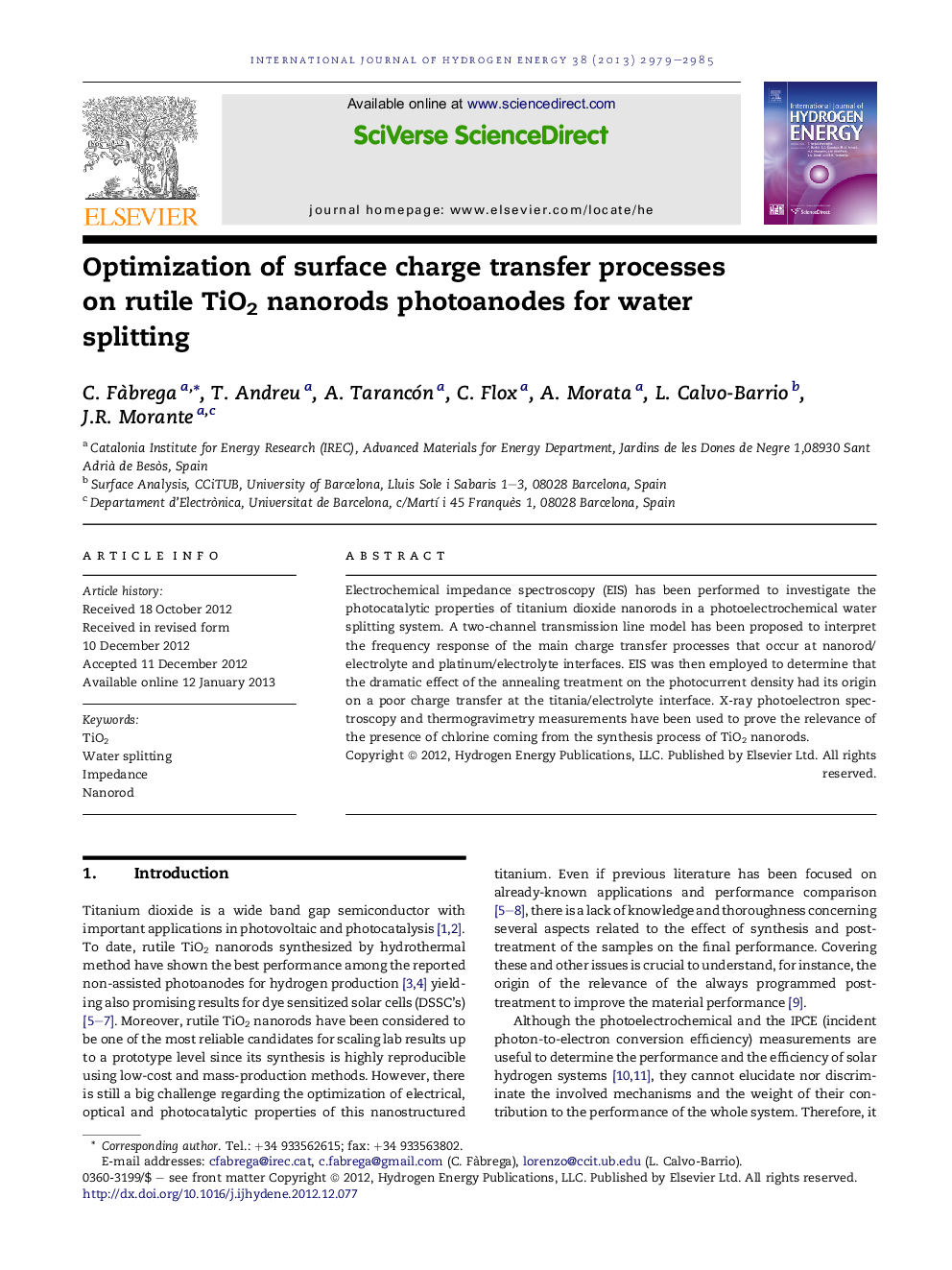| کد مقاله | کد نشریه | سال انتشار | مقاله انگلیسی | نسخه تمام متن |
|---|---|---|---|---|
| 1281963 | 1497538 | 2013 | 7 صفحه PDF | دانلود رایگان |

Electrochemical impedance spectroscopy (EIS) has been performed to investigate the photocatalytic properties of titanium dioxide nanorods in a photoelectrochemical water splitting system. A two-channel transmission line model has been proposed to interpret the frequency response of the main charge transfer processes that occur at nanorod/electrolyte and platinum/electrolyte interfaces. EIS was then employed to determine that the dramatic effect of the annealing treatment on the photocurrent density had its origin on a poor charge transfer at the titania/electrolyte interface. X-ray photoelectron spectroscopy and thermogravimetry measurements have been used to prove the relevance of the presence of chlorine coming from the synthesis process of TiO2 nanorods.
Figure optionsDownload as PowerPoint slideHighlights
► TiO2 nanorods exhibit high photoelectrochemical efficiency under sunlight.
► The efficiency is strongly affected by a final heat treatment step during synthesis.
► Residual chlorine species from the synthesis process block the reaction sites.
► Heating above 250 °C under O2 needed to completely remove residual chlorine species.
Journal: International Journal of Hydrogen Energy - Volume 38, Issue 7, 7 March 2013, Pages 2979–2985